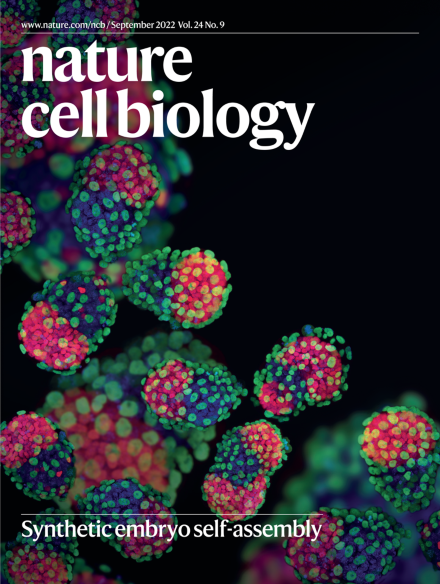Defining heterogeneity in core regulatory circuitry reveals HOXB3 condensation as a potential target in glioblastoma
IF 19.1
1区 生物学
Q1 CELL BIOLOGY
引用次数: 0
Abstract
Glioblastoma (GBM) exhibits marked heterogeneity, yet therapeutic strategies effectively targeting this variability remain inadequately developed. Here we employed single-cell CUT&Tag analysis to investigate H3K27ac modifications, uncovering pronounced heterogeneity within the core regulatory circuitry (CRC) of GBM. Notably, we observed heterogeneous condensation states of CRC factors, particularly HOXB3, which are shaped by its intrinsically disordered regions and interactions with RUNX1, driving the phenotypic manifestations. Leveraging these findings, we synthesized the peptide P621-R9, which effectively disrupted HOXB3 condensation, altered chromatin structure and reduced transcription at super-enhancer-associated oncogenic sites in GBM cells exhibiting HOXB3 condensation. Treatment with P621-R9 selectively diminished tumourigenic potential in GBM patient-derived xenograft models characterized by HOXB3 condensates, but showed no efficacy in the models lacking these condensates. These results highlight the critical role of CRC condensation in GBM heterogeneity and suggest that peptide-based targeting of distinct GBM subpopulations could represent an avenue for therapeutic exploration. Zhang et al. delineate the heterogeneity of core regulatory circuitry in glioblastoma and identify HOXB3 condensation as a vulnerability that may be targeted with a therapeutic peptide in mouse models.

定义核心调控回路的异质性揭示HOXB3凝聚是胶质母细胞瘤的潜在靶点。
胶质母细胞瘤(GBM)表现出明显的异质性,但有效针对这种变异性的治疗策略仍未充分开发。在这里,我们使用单细胞CUT&Tag分析来研究H3K27ac修饰,揭示了GBM核心调控电路(CRC)中明显的异质性。值得注意的是,我们观察到CRC因子,特别是HOXB3的异质凝聚状态,这是由其内在无序区域和与RUNX1的相互作用形成的,驱动了表型表现。利用这些发现,我们合成了肽P621-R9,它有效地破坏了HOXB3缩聚,改变了染色质结构,并减少了表现HOXB3缩聚的GBM细胞中超增强子相关致癌位点的转录。在以HOXB3凝聚体为特征的GBM患者来源的异种移植物模型中,P621-R9治疗选择性地降低了肿瘤的发生潜力,但在缺乏这些凝聚体的模型中没有效果。这些结果强调了结直肠癌凝聚在GBM异质性中的关键作用,并表明基于肽靶向不同GBM亚群可能代表治疗探索的途径。
本文章由计算机程序翻译,如有差异,请以英文原文为准。
求助全文
约1分钟内获得全文
求助全文
来源期刊

Nature Cell Biology
生物-细胞生物学
CiteScore
28.40
自引率
0.90%
发文量
219
审稿时长
3 months
期刊介绍:
Nature Cell Biology, a prestigious journal, upholds a commitment to publishing papers of the highest quality across all areas of cell biology, with a particular focus on elucidating mechanisms underlying fundamental cell biological processes. The journal's broad scope encompasses various areas of interest, including but not limited to:
-Autophagy
-Cancer biology
-Cell adhesion and migration
-Cell cycle and growth
-Cell death
-Chromatin and epigenetics
-Cytoskeletal dynamics
-Developmental biology
-DNA replication and repair
-Mechanisms of human disease
-Mechanobiology
-Membrane traffic and dynamics
-Metabolism
-Nuclear organization and dynamics
-Organelle biology
-Proteolysis and quality control
-RNA biology
-Signal transduction
-Stem cell biology
 求助内容:
求助内容: 应助结果提醒方式:
应助结果提醒方式:


